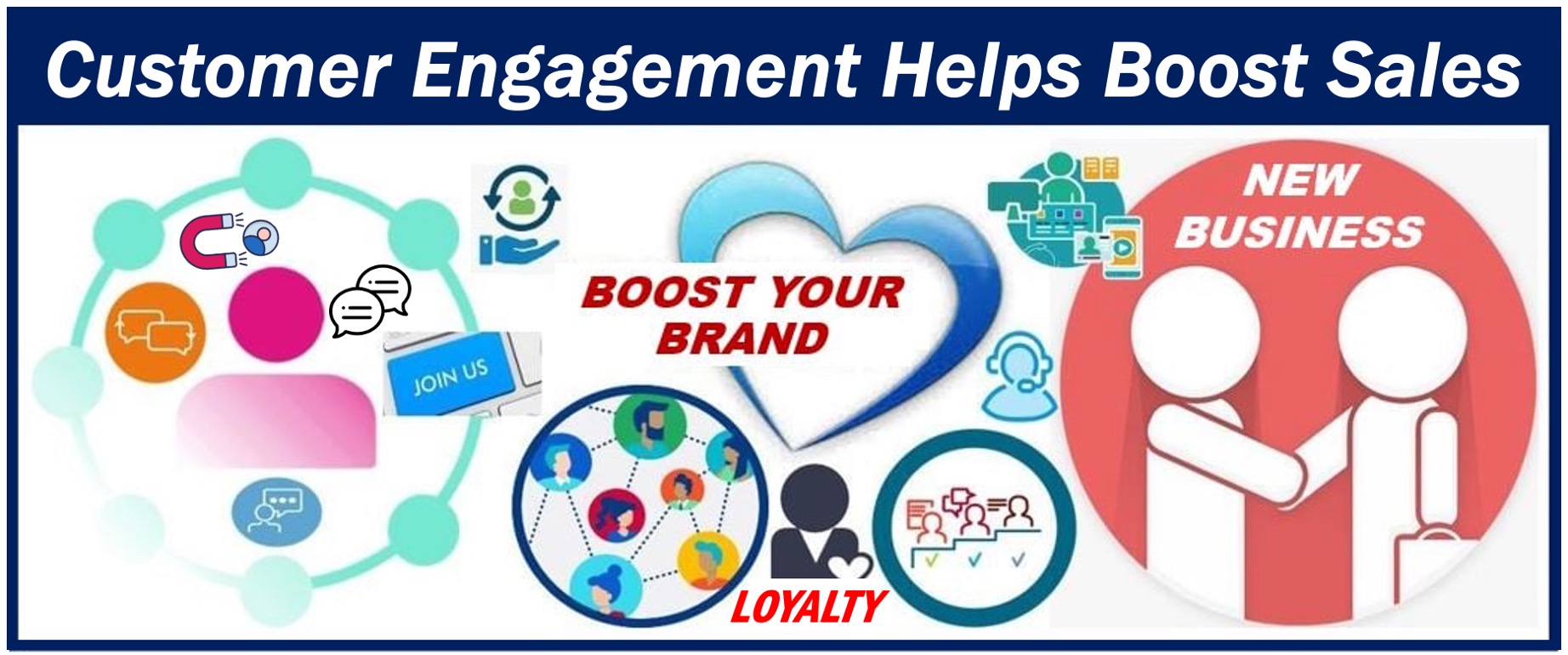Customer Engagement refers to the process of building a meaningful relationship between a seller and its customers. In today’s ever-evolving business landscape, engaging with customers and prospects has become a crucial component for success in most companies. A prospect is a consumer who you believe has a good chance of becoming a paying customer.
Customer engagement is more than mere transactions. It involves interactive and ongoing communication aimed at creating an active and loyal customer base.
Whether you are a newcomer who has just set up a startup or are a seasoned business expert, prioritizing customer engagement is a must. It will help you gain new customers, retain your current ones, boost brand loyalty, and stimulate business growth.
This holistic approach not only amplifies customer satisfaction but also turns customers into brand advocates, magnifying your brand’s reach and influence.
In an article published by Forbes, Monique Danao wrote the following about “customer engagement”:
“Customer engagement involves building relationships with customers at every touch point. It involves understanding customer needs, preferences and pain points. It’s about tailoring brand-related experiences to meet and exceed those expectations.”
Brief history
The term “customer engagement” has been part of business English for several decades, but it didn’t gain significant traction until the early 2000s. The advent of the internet and social media revolutionized the ways companies interact with their customers, elevating customer engagement to a key focus in marketing discussions today.

Understanding Customer Engagement
Essentially, customer engagement is about how you interact with our customers across various platforms and touchpoints. Here are some key channels through which businesses engage with their customers.
- Email:
Direct communication channel for personalized updates and offers, keeping your brand in customers’ minds. - Social media:
Informal interaction platform for content sharing, customer queries, and community building. - Website live chat:
Provides real-time assistance, making your brand more accessible and responsive. - Customer service portals:
Central hubs for FAQs, support tickets, and help, emphasizing customer support and value. - In-app messaging:
Direct communication within mobile or desktop applications for support and promotional content. - Feedback surveys:
Tools to collect customer opinions, demonstrating value for their feedback and improving services. - Loyalty programs:
Rewards for repeat business, encouraging continued purchases and thanking loyal customers. - Events and webinars:
Engage and provide value through informational or entertaining sessions, deepening customer relationships.
The sellers’ goal is to make these interactions as positive and valuable as possible. Apart from encouraging customers to continue buying, they can also become advocates for the brand.
Why engaging with customers matters
Do not underestimate the importance of customer engagement. Engaged customers are much more likely to come back for more. They are also more inclined to spend more and promote the brand through word-of-mouth.
This is because they feel a stronger emotional connection to the brand, which translates into greater satisfaction levels and higher loyalty.
Furthermore, in today’s digital age where consumers have endless options to choose from, engagement becomes a key differentiator for businesses who want to stand out.
Before the advent of the Internet, consumers had to visit physical stores. Going from one to another took time. Comparing three or more stores’ offerings in one go was virtually impossible unless you had a lot of time on your hands. Today, we can go from one online retailer to another in a matter of seconds. In fact, it is even possible to be in two or more different stores at the same time.
Strategies for Enhancing Customer Engagement
There are many ways we can improve how we engage with our customers.
- Personalization
You will get a much better conversion rate if you can tailor your messages to each consumer’s preferences and behaviors.
This could mean personalized emails, customer service interactions, or recommendations.
The term “conversion rates,” in this context, refers to the percentage of people you engage with who go on to purchase your product or service.
- Leveraging technology
Tools such as CRM (Customer Relationship Management) systems can help you track and analyze your customer interactions. This makes it easier to provide timely and relevant responses.
- Content is king
Whether it is a helpful tutorial, a blog post, or an engaging video, make sure it is top quality and informative.
Your content must add value to the customer’s experience.
- Customer service
Customer service used to be a great bonus for businesses. Today it is a must. It should also be prompt, empathetic, and efficient.
Customer service should not only resolve issues but also build positive relationships. It can encourage customers to engage more deeply with the brand.
Thanks to advancements in AI (artificial intelligence), there are some amazing chatbots today. A chatbot is a software application designed to simulate conversation with human users, especially over the internet.
Conclusion
Customer engagement is a dynamic and crucial strategy for building close and lasting relationships with customers.
By focusing on meaningful interactions, quality content, the use of technology, personalization, and excellent customer service, you can enhance your business’s customer engagement. This, in turn, leads to a stronger brand reputation, a more loyal customer base, and higher sales.
